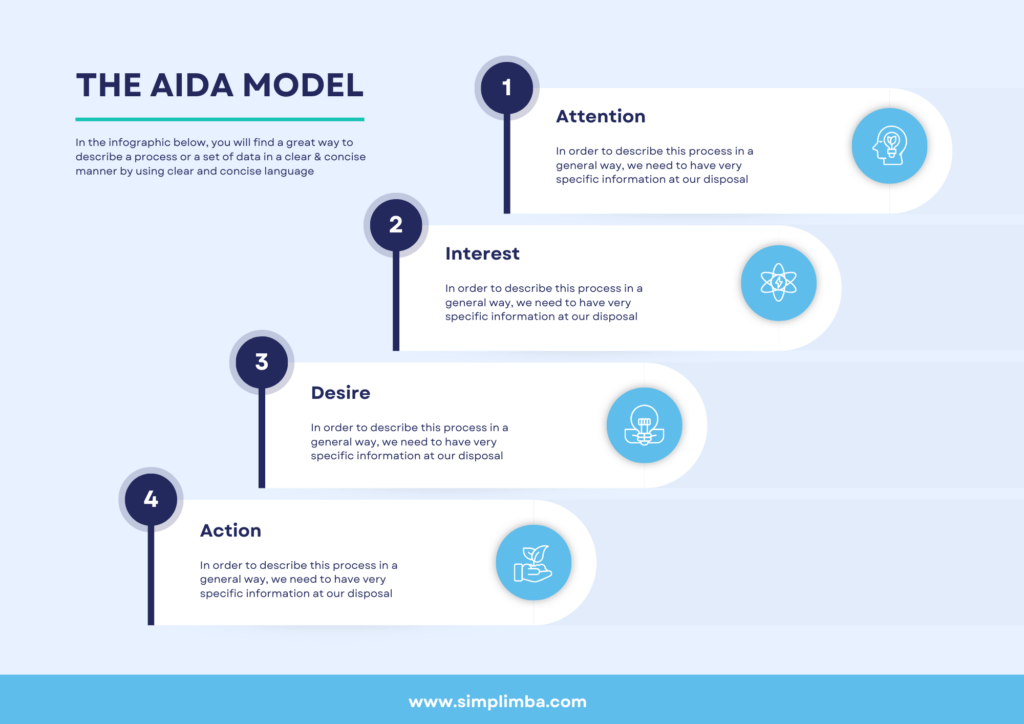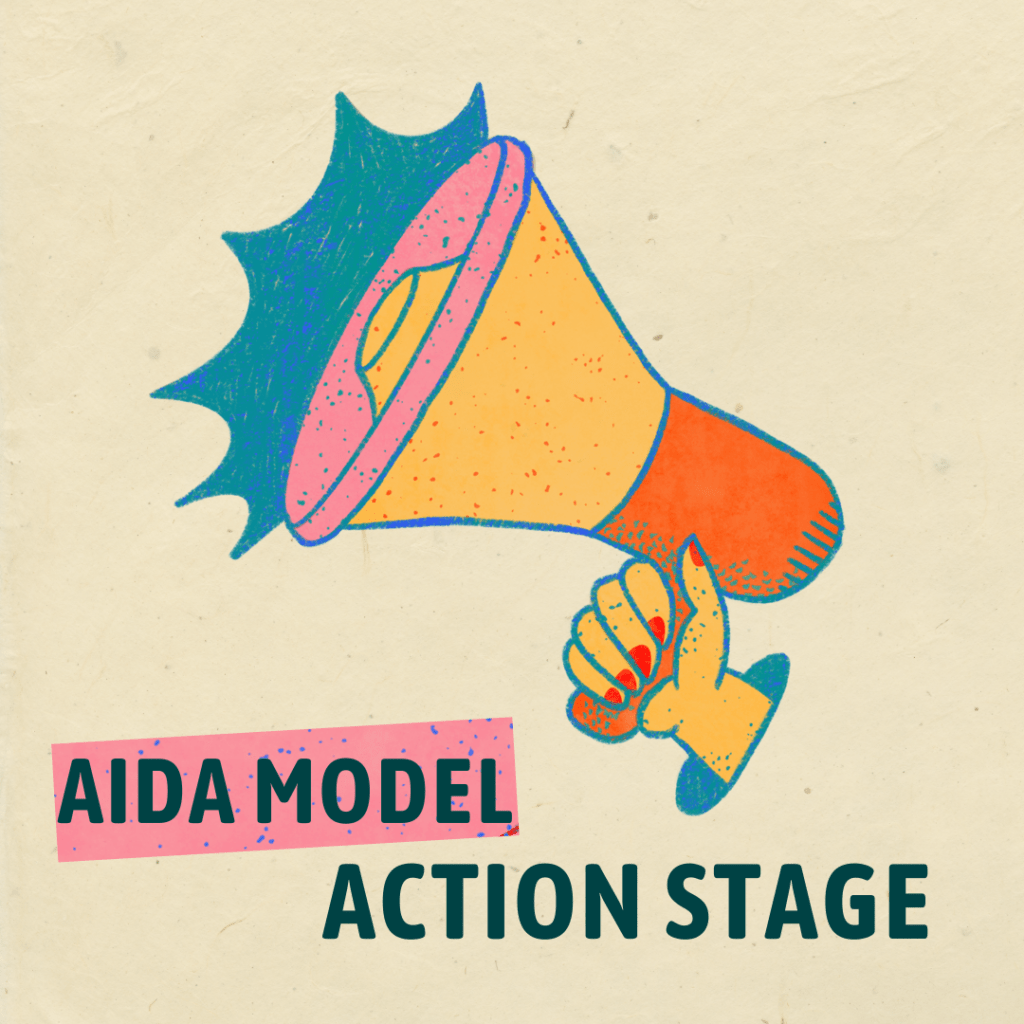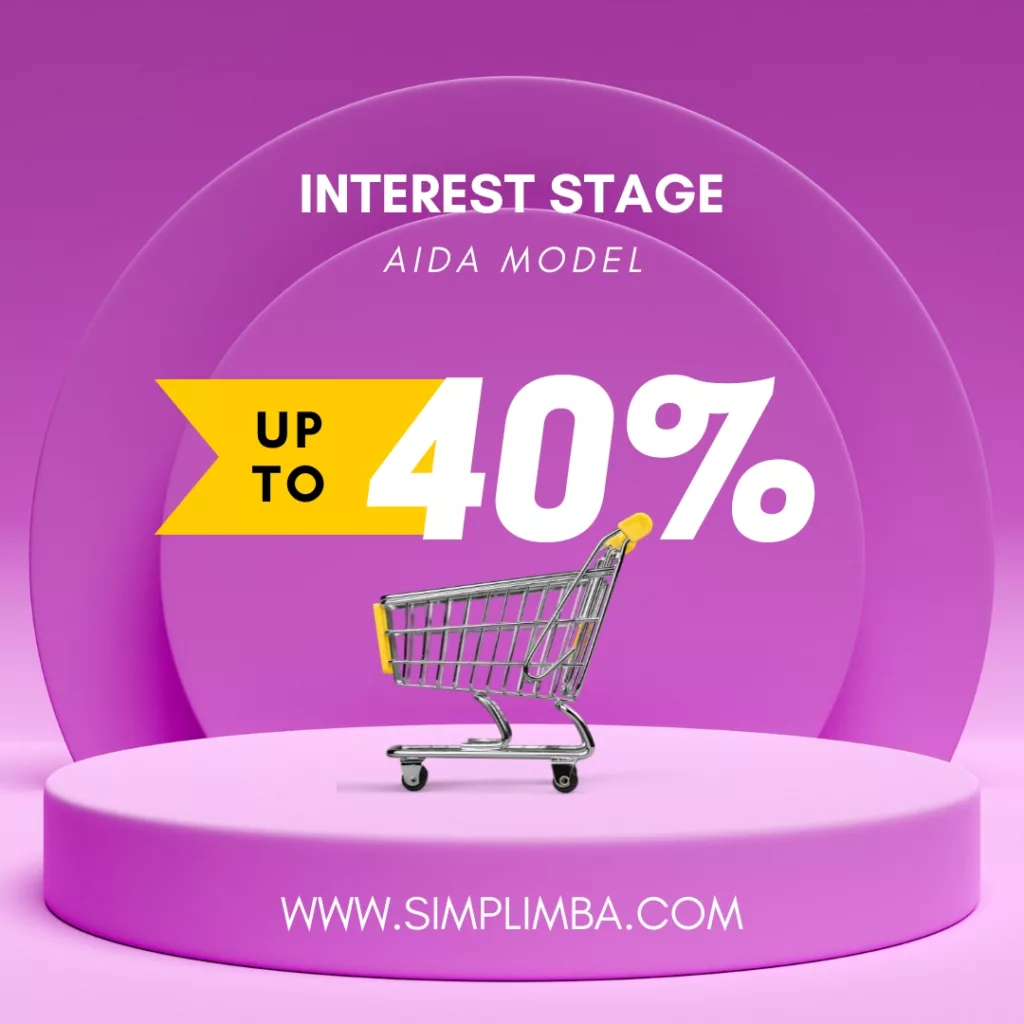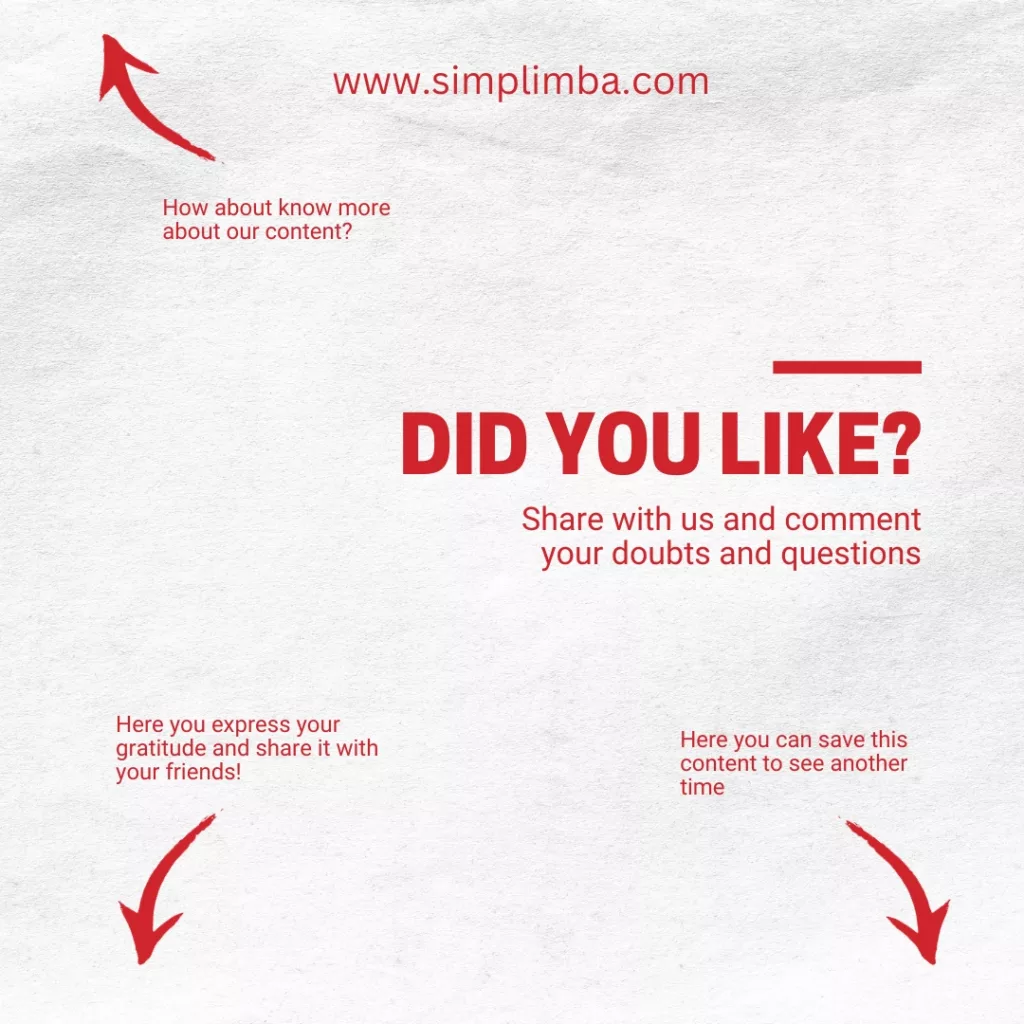
The AIDA model is a popular framework used in advertising and marketing to guide the creation of effective advertisements. AIDA stands for Attention, Interest, Desire, and Action, and it represents the stages a consumer goes through when engaging with an advertisement.
In the Attention stage, the goal is to grab the viewer’s attention and make them aware of the product or service being advertised. A study found that 65% of consumers skip online video ads before the five-second mark, highlighting the importance of capturing attention quickly. Eye-catching visuals, catchy slogans, and intriguing headlines are powerful tools to achieve this.
Once attention is captured, the Interest stage aims to hold the viewer’s attention and pique their curiosity. A study showed that 59% of consumers prefer advertising that tells a story, as it engages their emotions and creates a connection with the brand. Creating a narrative that resonates with the viewer’s values and desires can be a powerful way to create interest and keep them engaged.
The Desire stage is where the advertisement aims to create a desire or need for the product or service. Studies have shown that emotional appeals are more effective in driving desire than rational arguments. For example, a study found that ads that evoke happiness and positive emotions resulted in higher purchase intentions compared to those that emphasized product features. Utilizing psychological techniques, such as social proof or scarcity, can further enhance desire and motivate action.
Finally, the Action stage is where the advertisement aims to prompt the viewer to take action, such as making a purchase or signing up for a newsletter. The call-to-action should be clear, concise, and easy to follow. A study found that placing the call-to-action above the fold resulted in a 20% increase in conversion rates compared to below the fold. This emphasizes the importance of visibility and accessibility when it comes to encouraging action.
Interested to Learn About More Advertisements Models like AIDA Model, refer to our blog here
AIDA MODEL: ACTION STAGE

The attention stage is the crucial first step in any marketing journey, where the goal is to grab the attention of your target audience and make them aware of your brand or product. With the rise of digital advertising, capturing attention has become more challenging than ever before. Research shows that the average attention span of humans has declined from 12 seconds in 2000 to just 8 seconds in 2021 (Microsoft, 2015). This means that marketers have a very short window of opportunity to captivate their audience and convey their message effectively.
One effective way to capture attention is through storytelling. Case studies have shown that storytelling can increase audience engagement and retention of information. For example, a study conducted by the University of California found that stories activate different parts of the brain, making it easier for people to remember and emotionally connect with the information (Ferstl, Zwaan, & Schmitt, 2002). By incorporating storytelling into the attention stage of marketing, brands can create a memorable and impactful experience for their audience.
Another strategy to capture attention is by leveraging data and personalization. According to a report by Adobe, 63% of consumers are willing to share their data if it results in a personalized experience (Adobe, 2019). By analyzing customer data and tailoring marketing messages accordingly, brands can deliver more relevant and engaging content to their target audience. This can help cut through the noise and capture attention in a crowded digital landscape.
In addition, visual content plays a vital role in capturing attention. Research has shown that posts with images or videos receive significantly more engagement and shares on social media platforms (Buffer, 2020). For example, a study by Socialbakers revealed that posts on Facebook with images or videos received 2.3 times more engagement than those without (Socialbakers, 2019). Incorporating visually appealing content into the attention stage of marketing can help brands stand out and capture the fleeting attention of their audience.
Lastly, partnerships and endorsements can be powerful tools to capture attention. A study by Nielsen found that consumers are four times more likely to buy a product or service recommended by a friend (Nielsen, 2015). By partnering with influencers or industry experts, brands can leverage their existing audience and credibility to capture the attention of their target market. This strategy has been successfully employed by numerous companies, such as Nike collaborating with athletes like Serena Williams and Cristiano Ronaldo.
Interested to Learn About More Advertisements Models like AIDA Model, refer to our blog here
AIDA MODEL: INTEREST STAGE

The interest stage in AIDA Model is a crucial phase in the buyer’s journey where potential customers start exploring and researching options for a specific need or problem they have. During this stage, individuals are actively seeking information and evaluating different solutions available to them. As a blogger, it is important to understand the interest stage and create content that captures the attention of these potential customers.
One effective way to address the interest stage is by creating informative and educational blog posts. According to a study conducted by HubSpot, companies that regularly blog generate 67% more leads compared to those that don’t. By providing valuable and insightful content, you can position yourself as an industry expert and build trust with your audience.
To cater to the interest stage, it is essential to thoroughly understand your target audience’s pain points and challenges. Conducting surveys or analyzing customer feedback can provide valuable insights that can be used to tailor your content to their specific needs. By addressing their concerns and providing practical solutions, you can capture their interest and keep them engaged.
Case studies are also powerful tools to leverage in the interest stage. Sharing success stories of previous customers or clients can showcase the effectiveness of your product or service. According to a survey by Forbes, 88% of consumers trust online reviews as much as personal recommendations. By highlighting real-life examples and quantifiable results, you can convince potential customers to consider your solution.
Another effective strategy for the interest stage is using data-driven content. According to a study conducted by Content Marketing Institute, content backed by solid data generates more traffic and engagement. By presenting statistics, trends, and industry insights, you can demonstrate your expertise and establish credibility among your audience.
Lastly, it is essential to optimize your content for search engines. Research shows that 93% of online experiences begin with a search engine. By conducting keyword research and incorporating relevant terms into your blog posts, you can increase your visibility and attract organic traffic from potential customers in the interest stage.
Interested to Learn About More Advertisements Models like AIDA Model, refer to our blog here
AIDA MODEL: DESIRE STAGE

The Desire Stage is the third stage in the consumer purchasing funnel and plays a crucial role in the decision-making process of consumers. At this stage, consumers have already identified their need or problem and have started looking for solutions. They have a desire to fulfill their needs or address their problems and are actively seeking information and options.
During the Desire Stage, consumers begin researching and evaluating different brands, products, or services that can satisfy their needs. According to a survey conducted by Google, 62% of consumers start their research online before making a purchase. This highlights the importance of digital presence for businesses to capture the attention of potential customers during this stage.
To effectively target consumers in the Desire Stage, businesses need to provide relevant and compelling information. It is crucial to highlight the unique selling points and benefits of the products or services being offered. Case studies and success stories can be powerful tools to showcase how a particular product or service has helped others in similar situations. According to a study by Demand Gen Report, 97% of B2B buyers consider content with peer reviews and user-generated content as more credible and influential.
Furthermore, businesses should also focus on building trust and credibility with their target audience during the Desire Stage. According to a survey conducted by Edelman, 81% of consumers say that they need to be able to trust the brand to buy from them. Testimonials and customer reviews can help establish trust and provide social proof to potential buyers.
Additionally, businesses should leverage social media platforms to engage with consumers and provide them with valuable content. According to a survey conducted by Sprout Social, 58% of consumers prefer brands that actively engage on social media. By sharing informative and relevant content, businesses can position themselves as industry experts and establish a connection with potential customers.
Interested to Learn About More Advertisements Models like AIDA Model, refer to our blog here
AIDA MODEL: ACTION STAGE

The action stage in AIDA Model is a critical part of any project or initiative. It is the stage where plans are put into motion and actual progress is made towards achieving objectives. This stage is often characterized by a sense of urgency and excitement, as it represents the culmination of all the planning and preparation that has taken place.
One key aspect of the action stage is the need for effective communication and collaboration. According to a study by the Project Management Institute, projects with strong communication and collaboration practices are 20% more likely to succeed than those without. This highlights the importance of clear and frequent communication among team members, stakeholders, and project leaders.
Another crucial factor in the action stage is the ability to adapt and make quick decisions. In the fast-paced and ever-changing business world, being able to react and adjust plans as needed is crucial for success. A case study conducted by Harvard Business Review found that companies that were agile and able to make quick decisions were more likely to achieve their goals and outperform their competitors.
Furthermore, the action stage is the time to track and measure progress towards goals. According to a research report by McKinsey, teams that regularly track their progress are 2.5 times more likely to achieve their objectives. This highlights the importance of setting clear metrics and regularly evaluating progress to ensure that the project stays on track.
Finally, the action stage also involves addressing any challenges or obstacles that may arise. It is common for unexpected issues to crop up during the implementation of a project. A study by the American Management Association found that effective problem-solving skills are crucial in overcoming these challenges and staying on track. This emphasizes the need for a proactive and solution-oriented approach during the action stage.
Interested to Learn About More Advertisements Models like AIDA Model, refer to our blog here
AIDA Model in Action: Examples of Succesful Advertisement Campaigns
One example of the AIDA model in action can be seen in Apple’s marketing campaigns. Apple is known for its sleek and innovative products, which initially captures consumers’ attention through visually appealing ads and creative product designs. They generate interest by highlighting the unique features and capabilities of their devices, such as the retina display or the seamless integration between hardware and software.
Furthermore, Apple creates desire by building an emotional connection with their target audience. They showcase how their products can enhance and simplify their users’ lives, mixing lifestyle images with practical demonstrations. This creates a sense of longing for the product as the consumer can envision the benefits it would bring to their own life.
To convert desire into action, Apple makes it easy for consumers to take the next steps. Their website and retail stores provide clear information on how to purchase their products, offering straightforward buying options and a seamless checkout process. In addition, Apple’s strong brand reputation and positive reviews from satisfied customers reinforce the purchasing decision, making it easier for consumers to feel confident in their choice.

Another example of the AIDA model in action is seen in Coca-Cola’s advertising campaigns. Coca-Cola has been a master at capturing consumers’ attention through their iconic and memorable ads. They use bold visuals, catchy jingles, and relatable themes to draw in their target audience and stand out in a crowded marketplace.
Coca-Cola builds interest by showcasing the refreshing and enjoyable experience of drinking their beverage. They often associate their product with happy moments, celebrations, and social interaction, evoking positive emotions in consumers and making them want to be a part of those experiences.
Desire is created through Coca-Cola’s consistent messaging and brand image. Their ads often depict people enjoying Coca-Cola in various settings, further reinforcing the idea that consumption of their product can bring joy and happiness. Moreover, Coca-Cola’s long-standing presence in the market and strong consumer loyalty contribute to the desire for their product.
In terms of action, Coca-Cola makes it easy for consumers to satisfy their desire. Their products are readily available in numerous retail locations and can be easily purchased online. Coca-Cola’s widespread distribution and availability increase the likelihood that consumers will take the final step and buy their product
Interested to Learn About More Advertisements Models like AIDA Model, refer to our blog here
Samrat is a Delhi-based MBA from the Indian Institute of Management. He is a Strategy, AI, and Marketing Enthusiast and passionately writes about core and emerging topics in Management studies. Reach out to his LinkedIn for a discussion or follow his Quora Page

